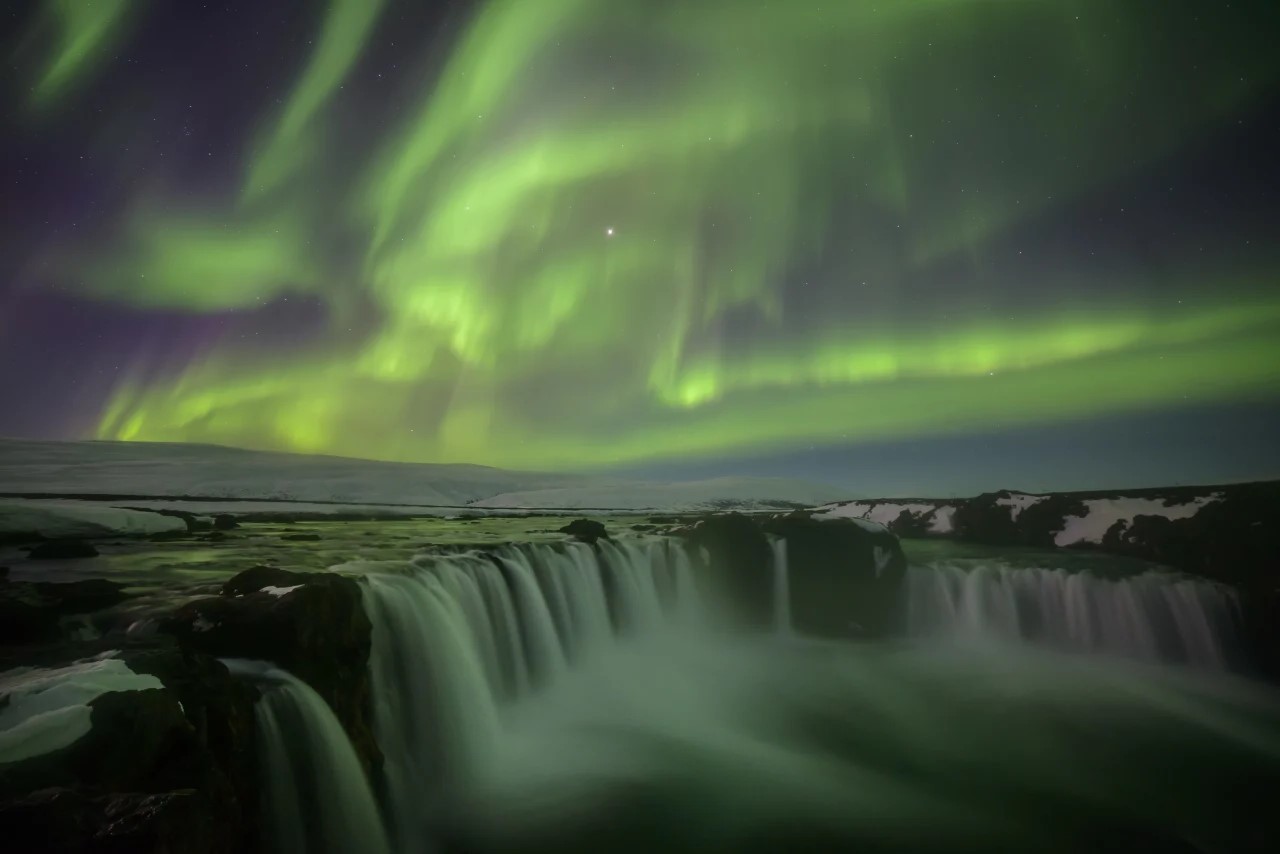Mystery Of Godafoss Waterfall

Have you ever wondered why Godafoss Waterfall is called the "Waterfall of the Gods"? This stunning natural wonder in Iceland holds a fascinating story. According to legend, around the year 1000, the Icelandic lawspeaker Thorgeir Ljosvetningagodi made a significant decision to convert Iceland to Christianity. To symbolize this monumental change, he threw his statues of the Norse gods into the waterfall. This act gave Godafoss Waterfall its name, blending history with breathtaking beauty. Today, visitors flock to this majestic site to witness its powerful cascades and to feel the connection to Iceland's rich cultural past. Ready to learn more? Let's dive in!
The Enchanting Beauty of Godafoss Waterfall
Godafoss, also known as the "Waterfall of the Gods," is one of Iceland's most stunning natural wonders. Located in the northeastern region, this majestic waterfall offers a breathtaking view that captivates visitors from around the world. Let's explore some fascinating aspects of this iconic destination.
The Legend Behind Godafoss
The name "Godafoss" has an intriguing origin story rooted in Icelandic history and mythology. According to legend, in the year 1000, the lawspeaker Thorgeir Ljosvetningagodi decided to convert Iceland to Christianity. He threw his statues of the Norse gods into the waterfall, symbolizing the nation's shift from paganism to Christianity.
The Geological Marvel
Godafoss is not just a historical site; it is also a geological wonder. The waterfall is part of the Skjálfandafljót River, which flows from the Icelandic Highlands. The river's powerful flow has carved out a semi-circular canyon, creating a stunning natural amphitheater.
Basalt Columns: The waterfall is surrounded by unique basalt columns formed by ancient volcanic activity. These hexagonal rock formations add to the dramatic landscape.
Lava Fields: The surrounding area is dotted with lava fields, remnants of past volcanic eruptions. These fields create a stark contrast to the lush greenery around the waterfall.
Best Time to Visit Godafoss
Timing your visit to Godafoss can make a significant difference in your experience. Each season offers a unique perspective of the waterfall.
Summer (June to August): During summer, the days are long, and the weather is mild. The lush vegetation and vibrant colors make it an ideal time for photography.
Winter (December to February): In winter, Godafoss transforms into a frozen wonderland. The waterfall partially freezes, creating stunning ice formations. It's a magical sight, especially under the Northern Lights.
Activities Around Godafoss
Godafoss is not just a place to admire from afar; there are plenty of activities to enjoy in the surrounding area.
Hiking: Several hiking trails offer different perspectives of the waterfall and the surrounding landscape. The trails range from easy walks to more challenging hikes.
Photography: With its dramatic scenery, Godafoss is a paradise for photographers. Capture the waterfall from various angles, including the viewpoints on both sides of the river.
Nearby Attractions
While Godafoss is a highlight, the surrounding region has other attractions worth exploring.
Lake Myvatn: Located about 50 kilometers east of Godafoss, Lake Myvatn is a geothermal area known for its hot springs, lava formations, and birdlife.
Akureyri: The town of Akureyri, often called the "Capital of North Iceland," is just a short drive from Godafoss. It offers charming streets, museums, and botanical gardens.
How to Get to Godafoss
Reaching Godafoss is relatively straightforward, whether you're driving or taking public transport.
By Car: The waterfall is located along Route 1, Iceland's Ring Road. It's about a 45-minute drive from Akureyri and a 6-hour drive from Reykjavik.
By Bus: Several bus routes connect Akureyri with Godafoss. Check local schedules for the most convenient options.
Tips for Visiting Godafoss
To make the most of your visit, keep these tips in mind:
Dress Appropriately: Iceland's weather can be unpredictable. Wear layers and waterproof clothing to stay comfortable.
Stay Safe: The rocks around the waterfall can be slippery. Stay on marked paths and be cautious near the edge.
Respect Nature: Preserve the beauty of Godafoss by not leaving any trash behind and respecting the natural environment.
Godafoss Awaits Your Visit
Godafoss Waterfall, with its stunning beauty and rich history, is a must-see for any traveler. The combination of natural wonder and cultural significance makes it a unique destination. Whether you're drawn by the legend of the gods or the sheer power of the cascading water, Godafoss offers an unforgettable experience.
Don't miss the chance to explore the surrounding area, including the nearby town of Akureyri and the scenic landscapes of North Iceland. Capture breathtaking photos, enjoy the peaceful ambiance, and immerse yourself in the local lore.
A visit to Godafoss is more than just a sightseeing trip; it's a journey into the heart of Icelandic heritage. Pack your bags, grab your camera, and get ready to be amazed by one of Iceland's most iconic waterfalls. Godafoss is waiting to share its magic with you.

